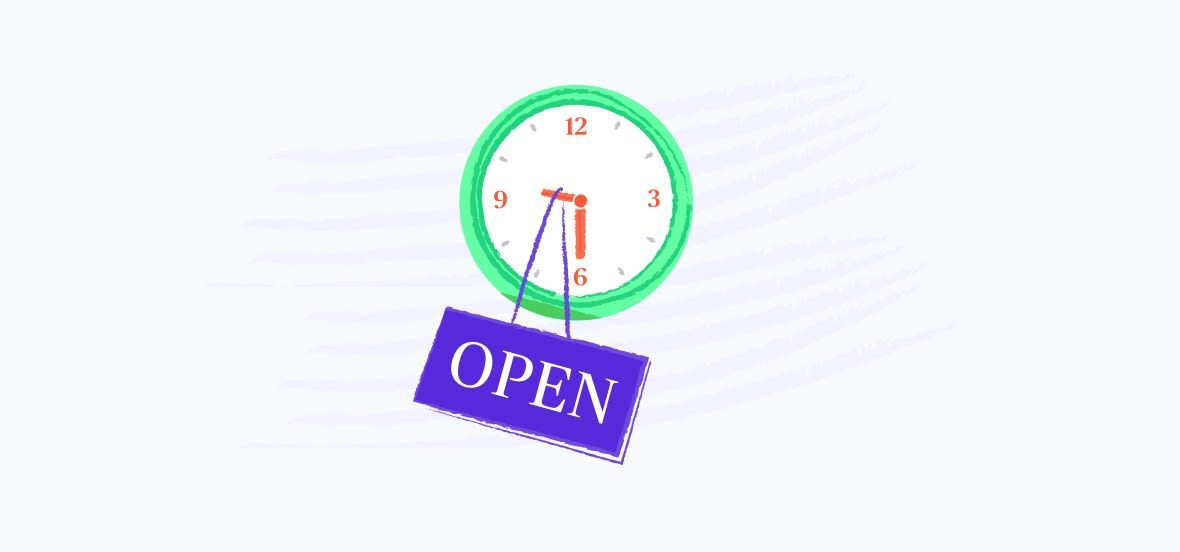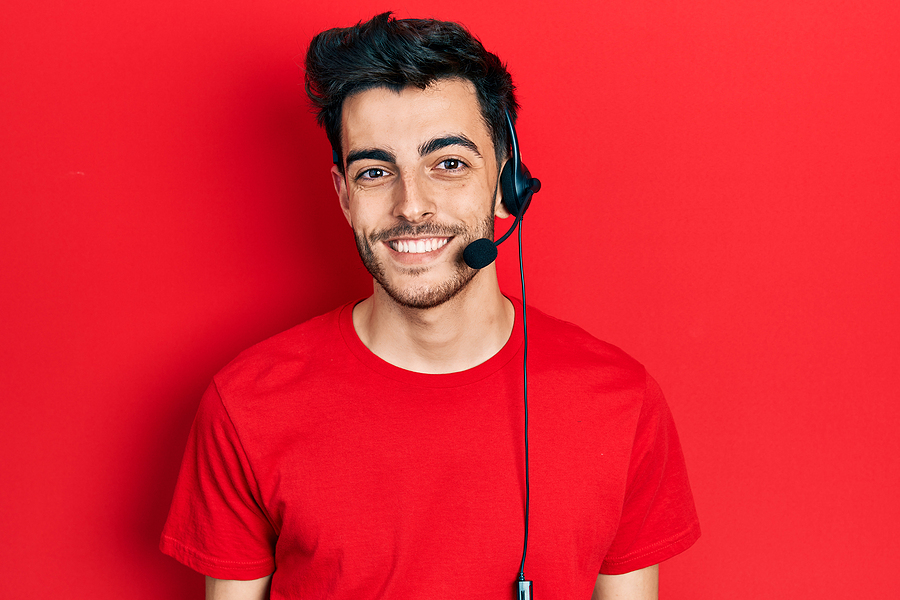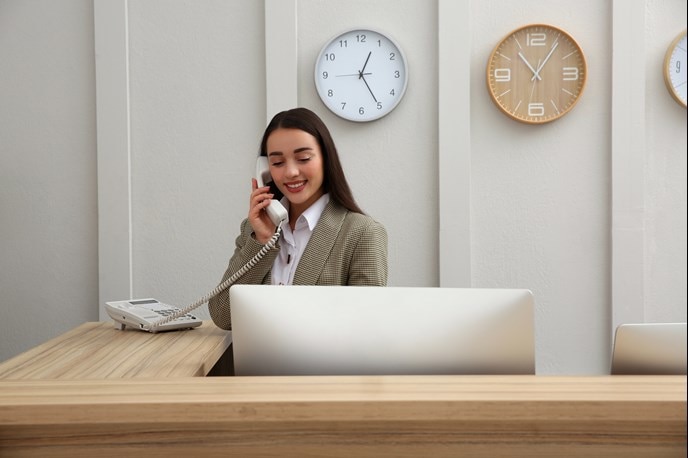All Categories
Featured
Table of Contents
- – What Is The Best The Best Answering Service For...
- – What Is The Best Answering Adelaide - Phone An...
- – What Is The Best How Outsourced Phone Answerin...
- – When Best Time To Buy How To Start An Answeri...
- – What Are The Best Telephone Answering Service...
- – When Are The Best Answering Service Operator...
What Is The Best The Best Answering Service For Clinics Product?
This gadget and its followers were developed by Sava Jacobson, an electrical engineer with a personal consulting organization. While early voice mail utilized magnetic tape innovation, a lot of contemporary equipment utilizes strong state memory storage; some gadgets utilize a combination of both, with a solid-state circuit for the outbound message and a cassette for the incoming messages.
"toll saving" below) (local phone answering service). This is helpful if the owner is screening calls and does not wish to speak to all callers. In any case after going, the calling party ought to be informed about the call having actually been answered (in many cases this begins the charging), either by some remark of the operator, or by some welcoming message of the TAD, or dealt with to non-human callers (e.
This holds particularly for the Littles with digitally saved welcoming messages or for earlier devices (before the rise of microcassettes) with an unique limitless loop tape, different from a 2nd cassette, committed to recording. There have actually been answer-only devices with no recording abilities, where the welcoming message had to notify callers of a state of present unattainability, or e (phone answering).
What Is The Best Answering Adelaide - Phone Answering Services Deal Out There

about accessibility hours. In taping Little bits the greeting generally contains an invitation to leave a message "after the beep". An answering machine that uses a microcassette to record messages On a dual-cassette answerphone, there is an outgoing cassette, which after the specified variety of rings plays a pre-recorded message to the caller.

Single-cassette voice mail consist of the outbound message at the start of the tape and inbound messages on the staying space. They first play the announcement, then fast-forward to the next readily available area for recording, then tape-record the caller's message. If there are many previous messages, fast-forwarding through them can cause a substantial hold-up.
This beep is typically described in the greeting message, requesting that the caller leave a message "after the beep". Little bits with digital storage for the tape-recorded messages do not reveal this delay, of course. A little bit might offer a push-button control center, where the answerphone owner can sound the home number and, by entering a code on the remote telephone's keypad, can listen to tape-recorded messages, or delete them, even when away from house.
What Is The Best How Outsourced Phone Answering Service Can Help Your ...

Thereby the device increases the variety of rings after which it responds to the call (typically by 2, resulting in 4 rings), if no unread messages are presently stored, however responses after the set number of rings (normally two) if there are unread messages. This allows the owner to discover out whether there are messages waiting; if there are none, the owner can hang up the phone on the, e.
Some makers also enable themselves to be remotely activated, if they have actually been switched off, by calling and letting the phone ring a certain large number of times (normally 10-15). Some company desert calls currently after a smaller variety of rings, making remote activation difficult. In the early days of Little bits an unique transmitter for DTMF tones (dual-tone multi-frequency signalling) was regionally required for push-button control, considering that the formerly utilized pulse dialling is not apt to convey proper signalling along an active connection, and the dual-tone multi-frequency signalling was executed step-by-step.
Any incoming call is not recognizable with respect to these residential or commercial properties in advance of going "off hook" by the terminal equipment. So after going off hook the calls must be switched to appropriate devices and only the voice-type is immediately accessible to a human, however perhaps, nevertheless should be routed to a LITTLE BIT (e.
When Best Time To Buy How To Start An Answering Service Business
What if I told you that you do not have to actually get your device when responding to a client call? Somebody else will. So hassle-free, best? Answering phone calls doesn't need somebody to be on the other end of the line. Effective automated phone systems can do the technique simply as efficiently as a live representative and in some cases even much better.
An automated answering service or interactive voice action system is a phone system that communicates with callers without a live individual on the line - virtual answering service. When business utilize this technology, consumers can get the response to a concern about your organization just by using interactions set up on a pre-programmed call flow.
Although live operators update the customer support experience, lots of calls do not require human interaction. An easy taped message or instructions on how a client can recover a piece of info generally fixes a caller's instant requirement - phone call answering. Automated answering services are an easy and reliable method to direct incoming calls to the ideal individual.
What Are The Best Telephone Answering Service - Answer My Phone
Notification that when you call a company, either for support or item questions, the first thing you will hear is a pre-recorded voice greeting and a series of options like press 1 for customer support, press 2 for questions, and so on. The pre-recorded choices branch out to other choices depending on the client's selection.
The phone tree system assists direct callers to the best individual or department utilizing the keypad on a mobile phone. In some circumstances, callers can utilize their voices. It deserves noting that auto-attendant alternatives aren't restricted to the 10 numbers on a phone's keypad. When the caller has selected their very first option, you can design a multi-level auto-attendant that utilizes sub-menus to direct the caller to the right type of support.
The caller does not need to interact with a person if the auto-attendant phone system can handle their issue. The automated service can route callers to an employee if they reach a "dead end" and require help from a live agent. It is costly to employ an operator or executive assistant.
When Are The Best Answering Service Operator: What Is It? And How To ... Deals
Automated answering services, on the other hand, are considerably more economical and provide significant expense savings at an average of $200-$420/month. Even if you do not have committed personnel to manage call routing and management, an automatic answering service improves productivity by permitting your group to concentrate on their strengths so they can more efficiently spend their time on the phone.
A sales lead routed to customer service is a lost shot. If a client who has product concerns reaches the incorrect department or gets insufficient answers from well-meaning employees who are less trained to manage a particular type of concern, it can be a cause of aggravation and frustration. An automatic answering system can lessen the variety of misrouted calls, thus assisting your workers make better usage of their phone time while maximizing time in their calendar for other tasks.
With Automated Answering Systems, you can create a personalized experience for both your personnel and your callers. Make a recording of your primary greeting, and simply update it frequently to reflect what is going on in your organization. You can produce as lots of departments or menu alternatives as you desire.
Table of Contents
- – What Is The Best The Best Answering Service For...
- – What Is The Best Answering Adelaide - Phone An...
- – What Is The Best How Outsourced Phone Answerin...
- – When Best Time To Buy How To Start An Answeri...
- – What Are The Best Telephone Answering Service...
- – When Are The Best Answering Service Operator...
Latest Posts
Reputable Live Receptionist Service Near Me ( NT)
High-Quality Medical Answering Service Near Me – Australia 2606
Call Answering Service Near Me – Joondalup
More
Latest Posts
Reputable Live Receptionist Service Near Me ( NT)
High-Quality Medical Answering Service Near Me – Australia 2606
Call Answering Service Near Me – Joondalup